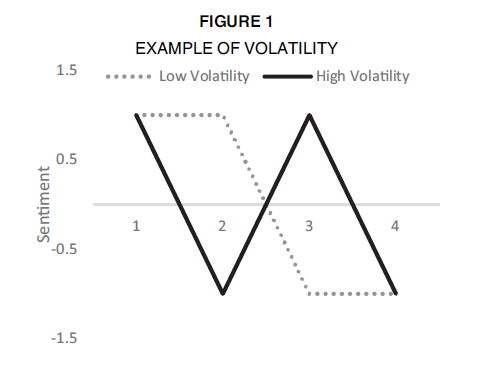What Makes Content Engaging?
Stories have shapes which can be drawn on graph paper. — Kurt Vonnegut
The title of today’s post shares its name with the title of new and fascinating research that tries to answer the following question: why do certain movies, books, stories, etc. catch on and become popular?

These days, it’s gone viral to say things have “gone viral,” and with this post, we’re going to take a closer look at what exactly makes content do just that.
IT’S TOO UNPREDICTABLE!
Now, let’s be clear. If psychologists had actually figured out the core answer to why certain movies/books become cultural sensations, my short stories would be a lot more well known. And in fact, some researchers contend that you can’t predict such cultural success – it’s based on too much randomness!
But even if we can’t pin down exactly what leads a news story, podcast, or Twitter tale to go viral, we can explain certain elements across them that are associated with their success.
And the one we’ll talk about today is called “sentiment volatility.”
I’M HOT, I’M COLD, I’M HOT, I’M COLD

People get bored of the same song, the same food, the same gimmick on YouTube. Evolutionarily, we’re predisposed to like variety because it keeps us stimulated and searching for better options. Therefore, when we experience variation in our lives – a different painting, a new wine – it generally makes you feel better than consuming the familiar item again.
For example, researchers find that completing a variety of different activities can make time pass faster – feel more exciting, be more fun – than doing the same activity over and over again.
So, when researchers analyzed popular movies for what similarities they might share, they made a relevant discovery: the content that had greater “variation” within them had more success.
For example, imagine the following two scenarios:
- Scenario 1: You don’t have your keys but you’re ready to leave – and your pockets are actually empty – but then you see the keys hanging near the door.
- Scenario 2:You have your keys and you’re ready to leave, but then you realize that your pockets are actually empty, but then you see the keys hanging near the door.
Between these two scenarios, which version was more engaging to read? Although they’re nearly identical (and both pretty boring), one of them – the second one – has greater “sentiment volatility.”

Sentiment volatility is defined as the frequency of shifts between positive and negative experiences (see the nearby figure). For example, high volatility in a story would be something good happens to the main character, then something bad, then something good, then something bad (vs. good, good, bad, bad — which has lower volatility).
And what this research finds is that the more a story shifts from making you feel positive to making you feel negative to making you feel positive (etc.), the more success it tends to get.
SHOW ME THE PROOF!
To provide evidence for this effect, researchers examined the transcripts of over 4,000 movies from 1981 to 2013. They then used text analysis algorithms to analyze these movies for how much sentiment volatility occurred within them. Then, they looked to see if a movie’s internal variation of positive and negative experiences (i.e., sentiment volatility) predicted the movie’s success.
And it did.

The more sentiment volatility there was in a movie, the higher IMDB score it received and the more box office sales it had. This effect was particularly true for mystery, horror, and fantasy movies and less so for sports, music, and documentaries. But overall, greater sentiment volatility enhanced engagement with the film.
The researchers then went on to replicate the effect in online articles, where the more sentiment volatility there was within an article, the more time people spent reading the article. The researchers also replicated the effect experimentally. By rearranging scenes in a movie to produce more (vs. less) sentiment volatility, the more engaging participants found the movie.
So, if you’re trying to make it big with your next short story, screenplay, or what have you, consider adding a little “sentiment volatility” to the narrative.
Nicely-Meanly-Nicely-Meanly,
Jake
Everyday Psychology: The insight from today’s post applies to more than just writing a New York Times Bestseller. Research suggests that you can apply this to everyday life. That is, when you interact with a person for the first time, being friendly followed by being overly friendly makes a less positive impression than being more neutral followed by being friendly. Now, I’m not advocating being mean to people, but changing from neutral to friendly (vs. friendly to overly friendly) can make you seem even more engaging.
Berger, J., Kim, Y. D., & Meyer, R. (2021). What Makes Content Engaging? How Emotional Dynamics Shape Success. Journal of Consumer Research, 48 (2), p. 235-50.






